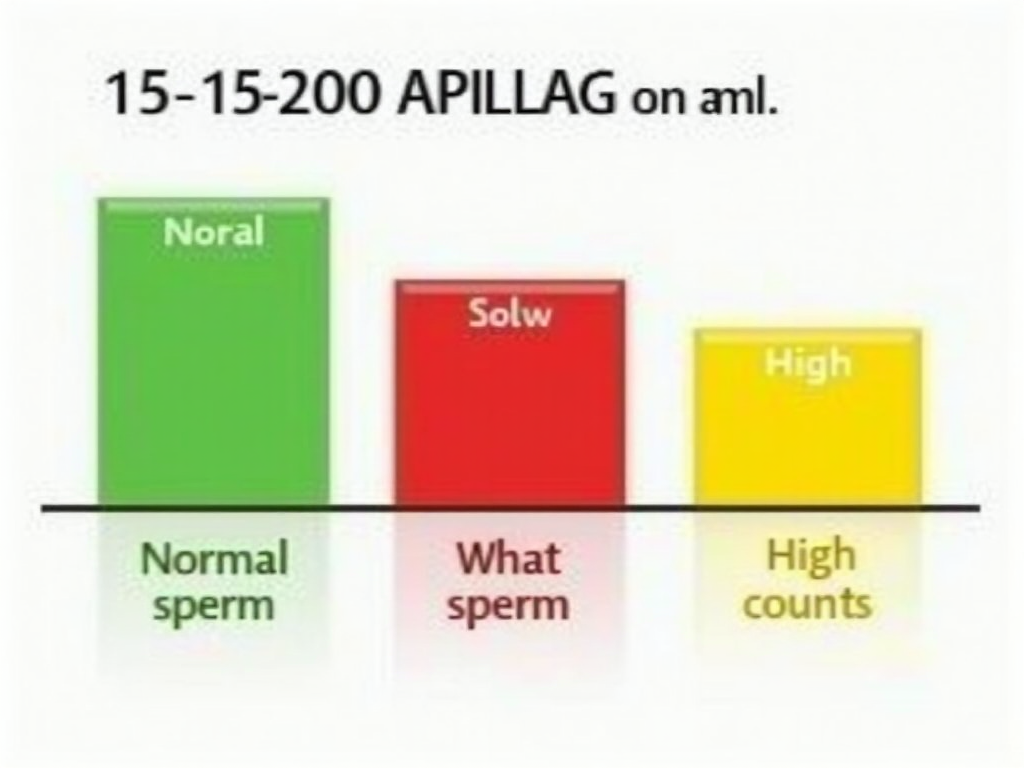Decoding Male Sperm Quality Metrics: A Comprehensive Guide
March 22, 2025, 9:45 a.m.
Semen analysis is a key test for checking male fertility. It looks at sperm count, movement, shape, and other factors. This article, Decoding Male Sperm Quality Metrics, explains these results in a simple way. Whether you're curious or facing infertility, you'll learn how to interpret semen analysis results and what to do next.
What Is Semen Analysis?
Semen analysis is a lab test that checks a man's semen to see how healthy his sperm are. Doctors use it to figure out if male infertility might be a reason a couple can’t conceive. You provide a sample—usually by masturbating into a sterile cup—and a technician examines it under a microscope. They measure things like how many sperm are there, how well they move, and what they look like.

The process is straightforward but can feel awkward. I remember a friend saying he felt nervous handing over the cup at the clinic. That’s normal! The lab needs a fresh sample, so you might do it there or at home if you’re close by. Once they have it, they check several metrics to get the full picture of your sperm quality.
Understanding Sperm Count
Sperm count is how many sperm are in one milliliter of semen. A normal count is 15 million to 200 million. Below 15 million is low—called oligospermia—and might make it harder to conceive. Too high isn’t common but could signal other health issues. Things like stress, smoking, or even tight clothing can lower your count.

I’ve seen guys worry when their count is low. One buddy cut out junk food and started jogging—his next test showed improvement. It’s not a quick fix, but lifestyle matters. Doctors say it takes about three months for new sperm to form, so changes you make now pay off later.
Sperm Motility: Why It Matters
Motility is about how well sperm move. To fertilize an egg, they need to swim through the female reproductive system. There are three types: progressive (moving straight), non-progressive (wiggling in place), and immotile (not moving). At least 40% should be progressive for good fertility. If most don’t move, conception gets tougher.

Poor motility can feel like a mystery. A guy I know found out his was low because of overheated work conditions. He switched jobs, and it helped. Heat, infections, or even sitting too long can affect this. It’s a reminder our bodies react to what we put them through.
Sperm Morphology: Shape and Structure
Morphology checks if sperm are shaped right. A normal sperm has an oval head, a midpiece for energy, and a tail to swim. At least 4% should look normal, though some labs want more. Weird shapes—like two heads or bent tails—can’t fertilize as well. It’s not about perfection; it’s about function.

Abnormal morphology doesn’t mean you’re out of luck. A colleague’s husband had mostly odd-shaped sperm but still conceived after some diet tweaks. It’s one piece of the puzzle. If other metrics are strong, you might not need to stress too much about this one.
Other Important Metrics
There’s more to semen analysis than just sperm. Here’s a quick list:
- Volume: Should be 1.5 to 5 milliliters. Too little might mean a blockage.
- pH: Normal is 7.2 to 8.0—too acidic or basic can hurt sperm.
- Liquefaction: Semen should turn liquid in 15-30 minutes.
- White Blood Cells: Too many could signal infection.
These give clues about what’s going on inside.

I once read a report where the volume was low. The doctor found a minor issue with the prostate—fixed it, and things improved. These extra metrics help pinpoint problems beyond just the sperm themselves. It’s like a health check for your reproductive system.
How to Interpret Semen Analysis Results
Your report will list numbers next to each metric, with normal ranges for comparison. If something’s off—like a low count or poor motility—don’t panic. Talk to a doctor. They might suggest another test (since results can vary) or look for causes like hormone issues. I’ve heard of guys feeling lost reading these, but it’s just data to guide you.

One time, a friend got a report showing low motility. He was freaked out, thinking infertility was certain. His doctor explained it was just one test and suggested waiting a month. Next time, it was better—stress had thrown off the first one. Patience and a pro’s input make a difference.
Improving Sperm Quality
Good news: you can boost sperm quality. Try these:
- Eat Smart: Load up on fruits, veggies, and nuts—think antioxidants like vitamin C and zinc.
- Move More: Exercise 3-4 times a week, but skip tight bike shorts.
- Cut Toxins: Quit smoking, limit alcohol, and avoid hot tubs.
- Chill Out: Stress kills sperm—try meditation or a walk.
Doctors might also offer meds or surgery if there’s a bigger issue.

A guy I know swore by walnuts and running. His count jumped after a few months. It’s not magic—just giving your body what it needs. Small steps add up, and even if you need medical help, these habits support it. Sperm take time to improve, so stick with it.
Summary
Decoding Male Sperm Quality Metrics is about understanding semen analysis and what it means for fertility. From count to motility to shape, each part tells a story. If results aren’t perfect, you’ve got options—lifestyle changes or a doctor’s help. Knowledge is power here. Talk to a pro for advice tailored to you.
Disclaimer: This is for info only—not medical advice. See a healthcare provider for your situation.